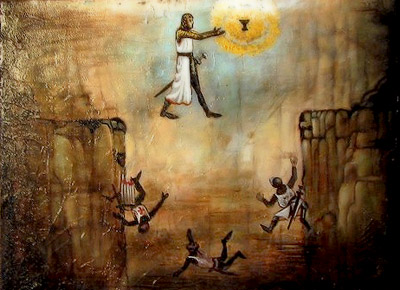 The Grail. Between 1190 and 1240 it formed the central theme of a series of literary works that spoke of and appealed to a new social class that of the knights and warriors and the adventures they encountered on their travels. In recent decades it unleashed Indiana Jones on one of his death-defying treasure hunts and was the central ingredient of Dan Browns The Da Vinci Code one of the biggest bestselling novels ever.
The Grail. Between 1190 and 1240 it formed the central theme of a series of literary works that spoke of and appealed to a new social class that of the knights and warriors and the adventures they encountered on their travels. In recent decades it unleashed Indiana Jones on one of his death-defying treasure hunts and was the central ingredient of Dan Browns The Da Vinci Code one of the biggest bestselling novels ever.
For Richard Barber in The Holy Grail: The History of a legend it is in all its forms a construct of the creative imagination. However for dozens of other authors the Grail is not a literary invention but a veritable treasure out there somewhere. Unfortunately in general studies trying to identify and trace the physical Grail have taken on flights of fancy. The Grail has been linked with countries from the Middle East to America as well as with the persecuted Cathars and even extra-terrestrial beings. It has been labelled a code word for the Ark of the Covenant after the Templars allegedly transported it from the Middle East to a new hiding place in France. Today “what is the Grail?” is no longer asked and instead we are repeatedly told often by these authors seeking the Grail that we should speak about “a Grail” which they of course have found. The Grail today can be anything to anyone and is no longer if it ever was a precise object but a word that should be written in lower case grail: a precious object or an ambition that one tries to attain often with great difficulty.
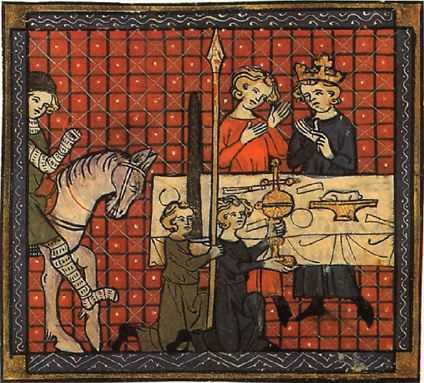 The first person to write on the Grail was Chrétien de Troyes in le Conte du Graal (The Story of the Grail) between 1180 and 1191. Interestingly Chrétien refers to his object not as the Grail but as un graal a grail suggesting the word was used in its earliest literary context as a common noun and that there were indeed more than one.
The first person to write on the Grail was Chrétien de Troyes in le Conte du Graal (The Story of the Grail) between 1180 and 1191. Interestingly Chrétien refers to his object not as the Grail but as un graal a grail suggesting the word was used in its earliest literary context as a common noun and that there were indeed more than one.
The basic Grail account opens with a young man Perceval encountering knights and realising he wants to be one. Despite his mothers objections the boy trains for the knighthood and begins a series of travels. On one such trip he comes across the Fisher King who invites him to stay at his castle. While there he witnesses a strange procession in which young men and women carry magnificent objects from one chamber to another passing before him at each course of the meal. First comes a young man carrying a bleeding lance then two boys carrying candelabras. Finally a beautiful young girl emerges bearing an elaborately decorated grail.
For whatever reason Chrétien de Troyes left us with an incomplete poem numbering 9000 lines of text; he never explained what a grail was. Though this non-definition might be seen as evidence that in his days everyone knew what a grail was in fact that was not the case. The appeal of his work came in part from the unknown object that had obviously inspired this wandering knight an object used in a setting that was unlike anything he had ever seen. In the following years there were a series of continuations written by four sometimes anynomous writers which took the total length of the Grail account to ca. 40000 lines of texts. Meanwhile others wrote prequels to the story such as the Elucidation Prologue which focused on the family and descent of Perceval emphasing that the relationship between the Grail and certain bloodlines is nothing new to The Da Vinci Code.
It was in short the start of a literary tradition in which the Grail was to become the central theme. With a literary existence of more than 800 years there has thus been ample time to write on the subject and that time has not been wasted to define and redefine the nature of the Grail. The most defining work however was composed almost immediately after Chrétien had finished his work was written between 1191 and 1202 and was the work of Robert de Boron who made a grail into the Holy Grail. In his verse romance La grant estoire dou Graal The Great History of the Grail more popularly known as Joseph dArimathie the biblical character of Joseph of Arimathea acquires the chalice of the Last Supper to collect Christs blood upon His removal from the cross. Joseph is later thrown in prison where Christ visits him and explains the mysteries of the blessed cup. Upon his release Joseph gathers his in-laws and other followers and travels to the west and founds a dynasty of Grail keepers that eventually will include Perceval. De Borons version has become the standard Grail account and it is the quest for this dynasty of Grail keepers and the object they protected that has become an enduring Quest for the Holy Grail which allegedly even preoccupied the leaders of Nazi Germany and Heinrich Himmler in particular.
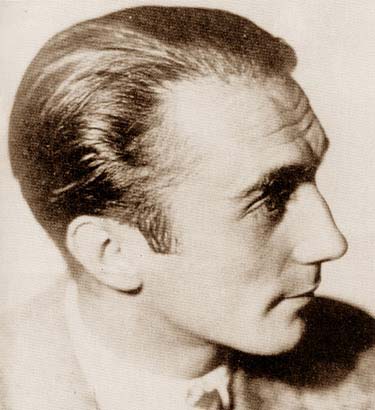 Though the interest of the Nazis in magical talismans like the Holy Grail and the Ark of the Covenant has almost become as mythical as the objects they chased themselves it is nevertheless well-documented that in the 1930s the head of the SS Heinrich Himmler personally oversaw a series of quests including that by a young SS officer Otto Rahn who went in search of the Grail in Southern France near the Cathar castle of Montségur. Rahns two books on the subjects including Crusade against the Grail were used by Himmler when he visited inspected the region in October 1940 when Himmler was in Barcelona while Hitler was holding a conference with the newly installed Spanish dictator General Francisco Franco. Hitler believed he could persuade Franco to join the war on Germanys side but whereas Hitler was talking politics Himmler specifically took in the various castles and locations Rahn had mentioned.
Though the interest of the Nazis in magical talismans like the Holy Grail and the Ark of the Covenant has almost become as mythical as the objects they chased themselves it is nevertheless well-documented that in the 1930s the head of the SS Heinrich Himmler personally oversaw a series of quests including that by a young SS officer Otto Rahn who went in search of the Grail in Southern France near the Cathar castle of Montségur. Rahns two books on the subjects including Crusade against the Grail were used by Himmler when he visited inspected the region in October 1940 when Himmler was in Barcelona while Hitler was holding a conference with the newly installed Spanish dictator General Francisco Franco. Hitler believed he could persuade Franco to join the war on Germanys side but whereas Hitler was talking politics Himmler specifically took in the various castles and locations Rahn had mentioned.
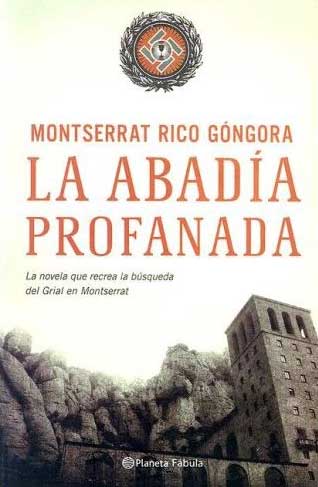 Montserrat Rico Góngora in The Desecrated Abbey states that Himmler visited the famous Montserrat Abbey near Barcelona where he thought he would find the Grail which Jesus Christ was said to have used to consecrate the Last Supper. According to Góngora Himmler was also inspired by a folk song from Catalonia the north-eastern region in which Montserrat lies which has a cryptic reference to a mystical font of life situated in the area. Hitlers right-hand man thought that if he could lay claim to the Holy Grail it would help Germany win the war and give him supernatural powers. Of course the relationship between the King of the Jews and the superiority of the Aryan race seem a cumbersome match so it might not come as a surprise that Himmler shared the outlandish belief with other leading Nazis that Jesus Christ was actually descended from Aryan stock.
Montserrat Rico Góngora in The Desecrated Abbey states that Himmler visited the famous Montserrat Abbey near Barcelona where he thought he would find the Grail which Jesus Christ was said to have used to consecrate the Last Supper. According to Góngora Himmler was also inspired by a folk song from Catalonia the north-eastern region in which Montserrat lies which has a cryptic reference to a mystical font of life situated in the area. Hitlers right-hand man thought that if he could lay claim to the Holy Grail it would help Germany win the war and give him supernatural powers. Of course the relationship between the King of the Jews and the superiority of the Aryan race seem a cumbersome match so it might not come as a surprise that Himmler shared the outlandish belief with other leading Nazis that Jesus Christ was actually descended from Aryan stock.
Himmler left Montserrat empty-handed.
Though often linked with the cup of the Last Supper the precise nature of the Grail is in origin undefined. Even though Chrétien de Troyes spoke of a grail there is no definitive answer as to what this grail was. This has meant that the undefined Grail can be used as a deus ex machina to try and give some credibility to an authors otherwise poor line of reasoning when setting out his theory whether fictional or not. Dare we suggest that this also happened in Dan Browns The Da Vinci Code where the Grail was imaginatively redefined as the vulva the V shape an original though not ingenious solution to the authors plot. It has left us with a forest of grails in which the Grail can no longer be distinguished. Like Himmler on his quest for the Holy Grail no-one who has gone in search for the true origins of the Grail has ever been successful; it has proven to be perhaps the most arduous of Grail quests.
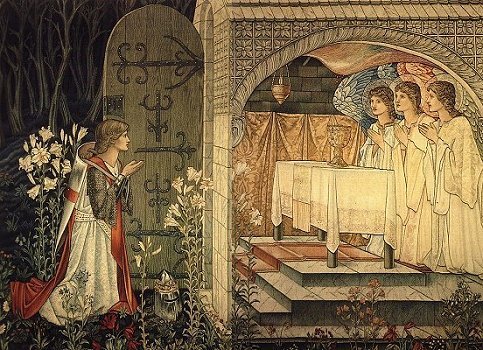 Still one man in the decades following Chrétien de Troyes account took it upon himself to answer what the Grail was. Wolfram von Eschenbach is now known as the author of Parzival the work that inspired Richard Wagners famous opera Parsifal which in literary circles is often described as the first extant work in German to have as its subject the Holy Grail as well as taking up a unique niche within the Grail literature as it doesnt fit in any of the categories the scholars have created. The reason for its unique position is that Wolfram unlike many of his contemporaries did not elaborate on Chrétiens story but expressed disdain for it labelling it erroneous in many of its details and stated that he would rectify these errors in Parzival. In short Wolfram claimed the Grail was real and he knew more about it. He claimed he knew because he had been in contact with a source Kyot from Provence who was able to furnish him with the truth. Wolfram claimed that he was able to identify the real characters of the Grail story as well as identify the true nature of the Grail: a magical stone.
Still one man in the decades following Chrétien de Troyes account took it upon himself to answer what the Grail was. Wolfram von Eschenbach is now known as the author of Parzival the work that inspired Richard Wagners famous opera Parsifal which in literary circles is often described as the first extant work in German to have as its subject the Holy Grail as well as taking up a unique niche within the Grail literature as it doesnt fit in any of the categories the scholars have created. The reason for its unique position is that Wolfram unlike many of his contemporaries did not elaborate on Chrétiens story but expressed disdain for it labelling it erroneous in many of its details and stated that he would rectify these errors in Parzival. In short Wolfram claimed the Grail was real and he knew more about it. He claimed he knew because he had been in contact with a source Kyot from Provence who was able to furnish him with the truth. Wolfram claimed that he was able to identify the real characters of the Grail story as well as identify the true nature of the Grail: a magical stone.
We can compare Wolframs situation very much with the modern example of The Da Vinci Code. Upon the publication and especially the success of Dan Browns book dozens of other novels appeared that treaded the same themes some with more success than others. Browns book also saw a series of guides that enhanced upon the organisations places and people worked into the book and debated their historical veracity or not. Amazingly this would lead to official statements from the Vatican as well as a high-profile court case in which two non-fiction authors Michael Baigent and Richard Leigh co-authors of Holy Blood Holy Grail sued Browns publisher for copyright infringement. A series of non-fictional works specifically on the Grail and Mary Magdalene also saw re-editions often with new titles that included the keyword code in it and some which even used the same font and cover design that had made The Da Vinci Code stand out in the bookstalls.
Imagine the task of Wolfram von Eschenbach who amidst this frenzy is trying to argue that Chrétien got it wrong but that he knows the truth. It is of course not an easy task and it does bear some resemblance to some claims made by authors today that they knew the truth about Dan Browns novel one of whom then adopted the pen-name of Dan Green!
In retrospect Wolfram failed miserably; he was unable to persuade Western Europe that he had definitively answered what the Grail was. Today most scholars even doubt the veracity of his source Kyot believing instead that Kyot was a literary device invented by Wolfram to explain his deviations from Chrétiens storyline. Professor of history Joseph Goering when discussing Wolfram thus calls his work the most elaborate and inventive retelling of Chrétiens story to add later that the book illustrates the fecundity of imagination of Wolfram. Nobody it seems believed Wolfram when he was claiming to speak the truth. Instead he was held to be just another writer. Only centuries later would he be saved from this doom by being labelled an oddity if only because he did not embrace the Christian setting that had become the standard frame of reference into which one spoke about the Grail the Holy Grail.
Today the Grail is largely seen as a literary invention but this may be a serious mistake. For one Wolfram on Eschenbach never wrote fiction; he was known for writing family histories non-fiction. Noting that he stated that when addressing the Grail he was correcting errors and was writing a factual account there is an obvious blatant problem that is never addressed by any of the scholars: by all accounts Wolfram was a non-fiction writer who set out to write a non-fiction account about the Grail. Furthermore Wolfram is very specific not only identifying his source as Kyot but stating that Kyot based the origin of the Grail on two documents. Despite such information the experts state they have been unable to identify who Kyot was (which is of course their problem not Wolframs) and hence they have treated Kyot as a literary invention by Wolfram or is mentioned without any further explanation.
 In short Wolframs Grail story was his rendition of Kyots historical detective work. One of the documents on which the Grail story is based is a family history which was the history of Perceval the leader of the family who came to possess the Grail. The other document is a pagan document thought to be absent from Christian medieval Europe containing a pagan doctrine that required an initiation¦ hence a brotherhood. Hence what the Grail quest set forth in this book has uncovered is threefold. First there is no reason to doubt that the Grail was indeed a magical stone. Second that this stone was in the possession of the Aragon royal family that lived on the southern slopes of the Pyrenees the general region where Rahn and Himmler explored. That this family had created a series of initiations and rites linked with the worship of this object and which we will refer to as the Grail Brotherhood. That the real Perceval of French descent was welcomed into this Brotherhood because of his family ties to the Aragon royal family. Third that the Aragon royal family initiated a project in which they hoped to transform
In short Wolframs Grail story was his rendition of Kyots historical detective work. One of the documents on which the Grail story is based is a family history which was the history of Perceval the leader of the family who came to possess the Grail. The other document is a pagan document thought to be absent from Christian medieval Europe containing a pagan doctrine that required an initiation¦ hence a brotherhood. Hence what the Grail quest set forth in this book has uncovered is threefold. First there is no reason to doubt that the Grail was indeed a magical stone. Second that this stone was in the possession of the Aragon royal family that lived on the southern slopes of the Pyrenees the general region where Rahn and Himmler explored. That this family had created a series of initiations and rites linked with the worship of this object and which we will refer to as the Grail Brotherhood. That the real Perceval of French descent was welcomed into this Brotherhood because of his family ties to the Aragon royal family. Third that the Aragon royal family initiated a project in which they hoped to transform 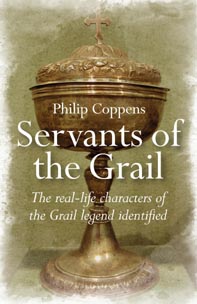 Europe into a Grail Kingdom: unite it and transform into a theocracy in which the unifying power object would be the Grail itself. That their ambition failed (quite early on too) might have contributed to the problems Wolfram faced in convincing the people of Western Europe that he was nevertheless right. But right it seems by all accounts he was¦ and the Grail was is real.
Europe into a Grail Kingdom: unite it and transform into a theocracy in which the unifying power object would be the Grail itself. That their ambition failed (quite early on too) might have contributed to the problems Wolfram faced in convincing the people of Western Europe that he was nevertheless right. But right it seems by all accounts he was¦ and the Grail was is real.
Excerpted from the introduction of
Servants of the Grail
by Philip Coppens
published by O Books
2009
ISBN 978-1-84694-155-9
©2007-2012 Philip Coppens displayed here with kind permission all rights reserved


